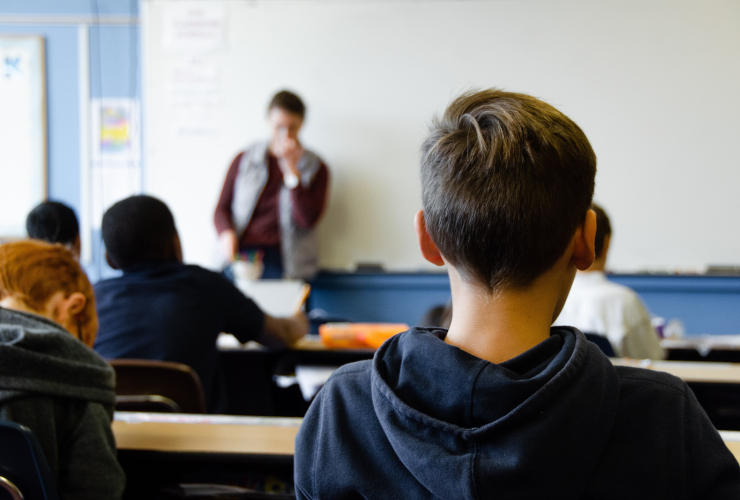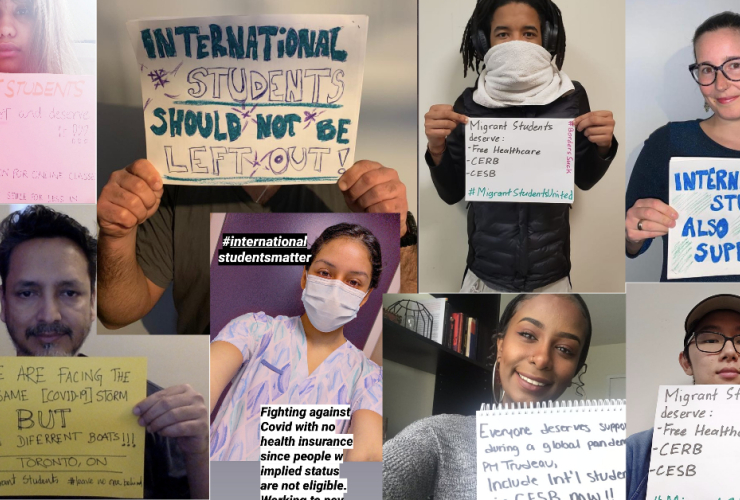COVID-19 has made access to education a unifying, global concern. At one point, over 90 per cent of students worldwide were affected, including 743 million girls. More than 100 million of those girls live in developing countries where accessing education was already difficult.
Given the tenuous foothold many girls had on education in the first place, this pandemic could wipe out decades of progress and set back the future of an entire generation.
Girls’ education is one of the best investments towards ending global poverty and achieving gender equality.
According to the World Bank, barriers that block girls from completing 12 years of education cost countries $15 trillion to $30 trillion in lost lifetime productivity and earnings.
Education is transformative for a girl: it delays marriage and pregnancy, improves her health and the health of her children if she has them, and increases her agency and decision-making power.
With families shouldering new economic pressures caused by COVID-19 lockdowns, along with anxiety, isolation and hunger, the barriers to girls’ education have grown, including:
- Cost: Even where school is free, parents must pay for school supplies. As families’ incomes dwindle, the costs may become too great, exacerbated by harmful gender norms that undervalue girls’ education as compared to boys.
- Child, early and forced marriage: Some parents marry off their young daughters believing it will protect them and reduce family economic pressures, resulting in many violations of their rights, including ending their education. Globally, 12 million girls are married before the age of 18 every year and UNFPA projects the COVID-19 pandemic may result in 13 million additional child marriages. Keeping girls in school is one of the best ways of preventing early and forced marriage.
- Unequal expectations around household chores and care work, caused by harmful gender norms: This burden is largely falling on girls, taking away study time and causing girls to fall behind or drop out. Globally, women undertake more than three quarters of unpaid care work.
- Gender-based violence and pregnancy: Girls isolated at home and out of school face increased risks of violence and sexual exploitation, escalating their risk of pregnancy and making it impossible to continue their studies. Out-of-school girls have a higher risk of pregnancy and in many parts of the world, pregnant girls are prohibited from attending school. Following the Ebola crisis of 2014, where schools were closed for months, there was a 65 per cent increase in adolescent pregnancy in Sierra Leone.
When schools close, children lose more than education — school meal programs, sexual and reproductive health and rights information, contraception and menstrual products. They also lose daily contact with friends, teachers and systems designed to protect them.
The longer girls remain cut off from education, the less likely they will return to school. From there, the setback to global poverty and gender equality goals — and most importantly, to realizing their rights — begins, deepening existing gender gaps.
To stop the setback, there must be equitable access to quality, gender-responsive education.
Governments and decision-makers must be flexible, ensuring equal rights for all children to education, taking their unique gendered needs into account. For example, barriers to girls’ education must be swiftly removed, including discriminatory policies preventing pregnant girls from attending school.
Where learning goes online, the gendered digital divide must be narrowed, including providing free and low-cost mobile internet access and digital literacy training for girls. Low-tech learning options must be provided, such as radio and television broadcasts or sending learning materials home, coupled with regular information and at-home-learning guidance for caregivers.
Community sensitization on girls’ education, shared domestic responsibilities and preventing and responding to gender-based violence and child marriage is vital to protect education gains for girls.
Finally, girls and young women in all their diversity must be consulted to help shape education policy and delivery that directly affect them.
Everyone has the power to make a difference.
Governments like Canada’s must continue to invest in girls’ education and champion girls’ voices and participation. The Canadian public can support organizations working in girls’ education and directly contribute to keeping girls in school. I’ve seen the public rally behind girls’ rights and I’m asking them to do this once again to stop the setback.
COVID-19 could leave the world far worse off, or it could be the catalyst to address long-ignored inequalities. Now is the time to prioritize girls’ education, for the benefit of their families and communities, for the benefit of reaching global goals to end poverty, and most importantly — for girls themselves, to unleash their full potential.
A better post-COVID world cannot exist without empowered, educated girls.
The article is cogent and
The article is cogent and accurate - reflecting the information donors to educational NGO's have been receiving for years. If one does nothing else to support developing societies this year, contributing to the NGO's (there are many of them!) that emphasize the education of females is an essential action. Do it NOW.
I agree wholeheartedly with
I agree wholeheartedly with the author’s evidence-based position. The only thing I would add to the list of suggestions is to engage men and boys at a community level, not only for girls’ education but also for positive social norms (such as more equitable care responsibilities in households) without which girls cannot explore their full potential.






Comments